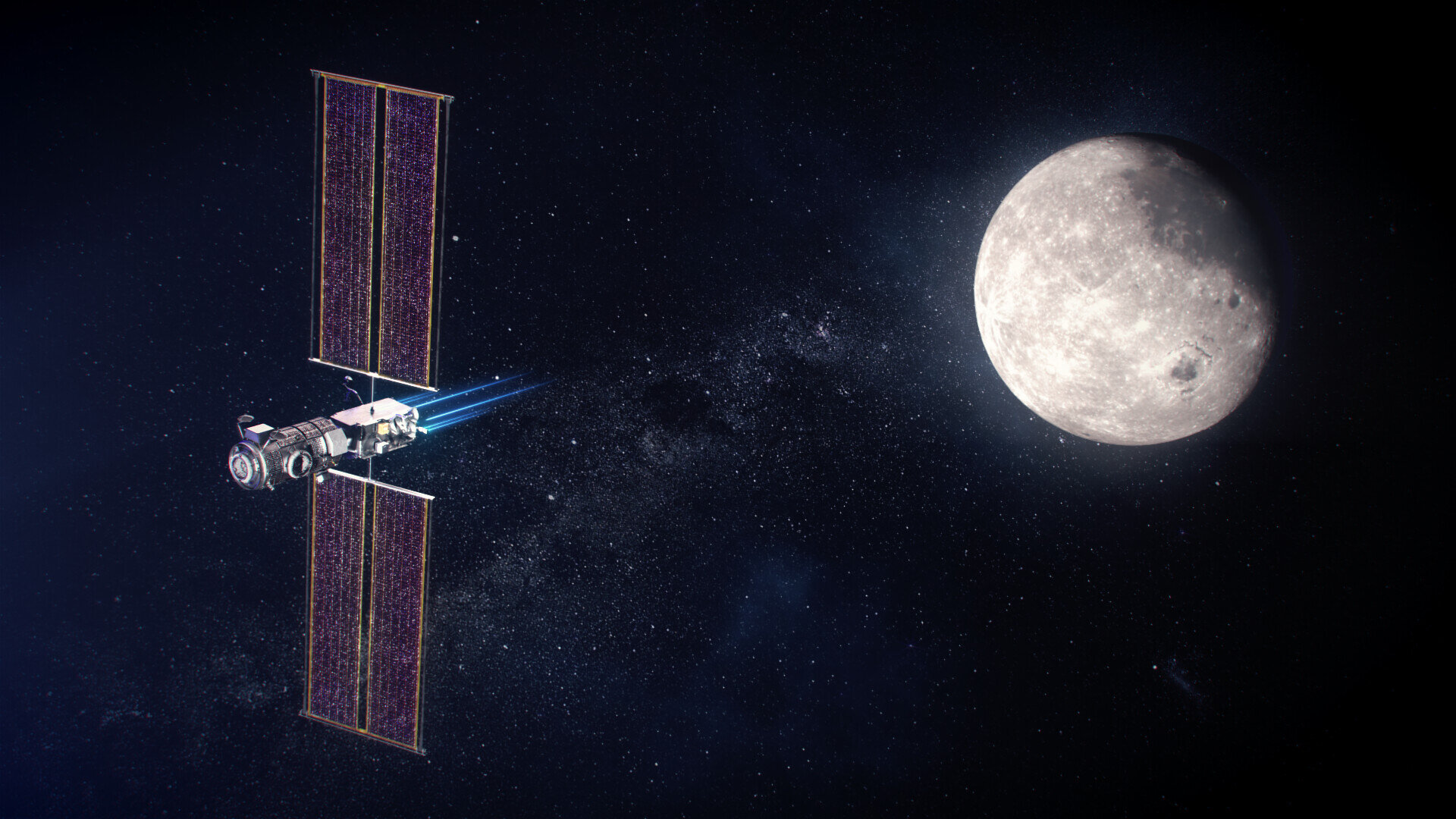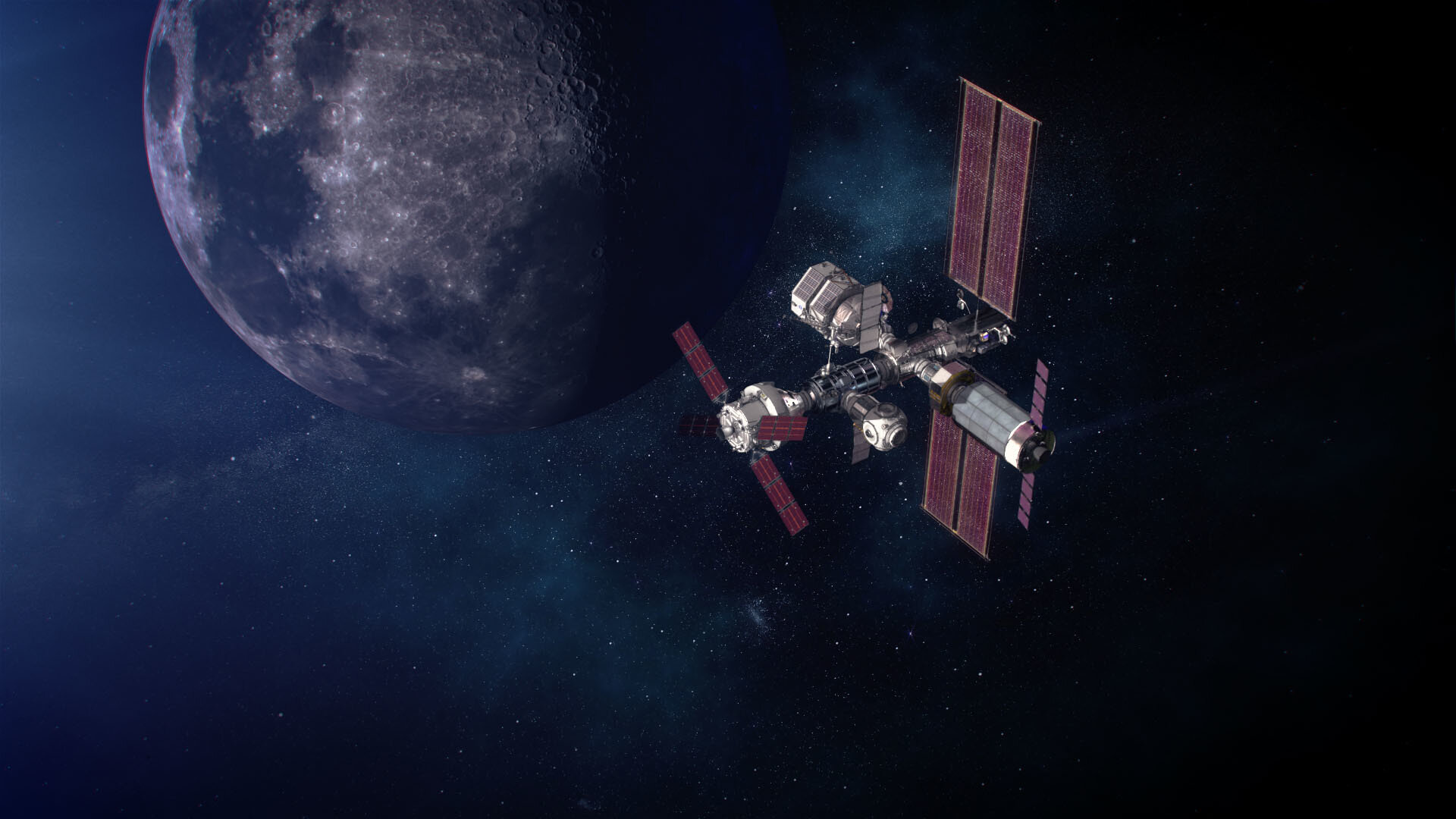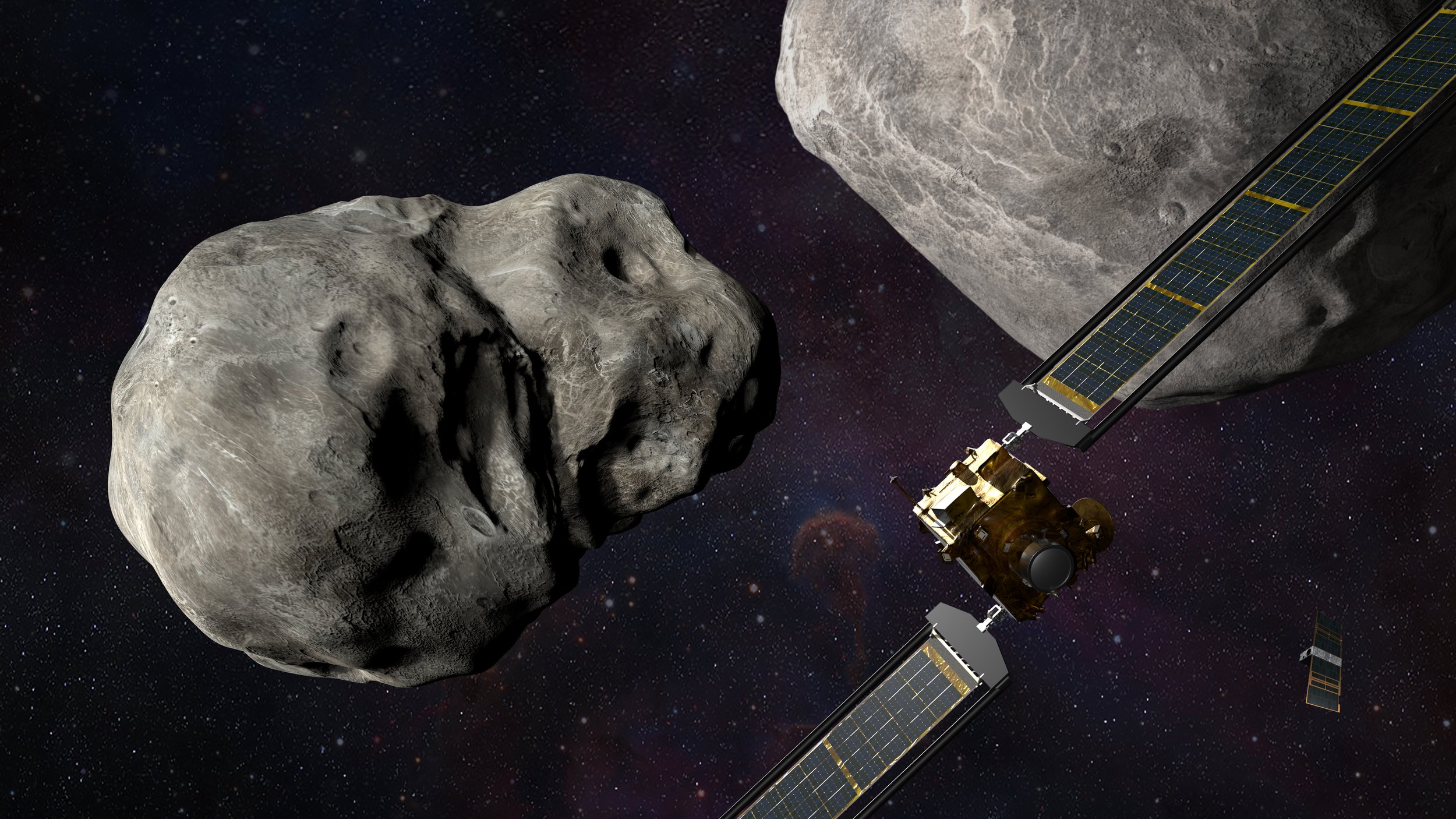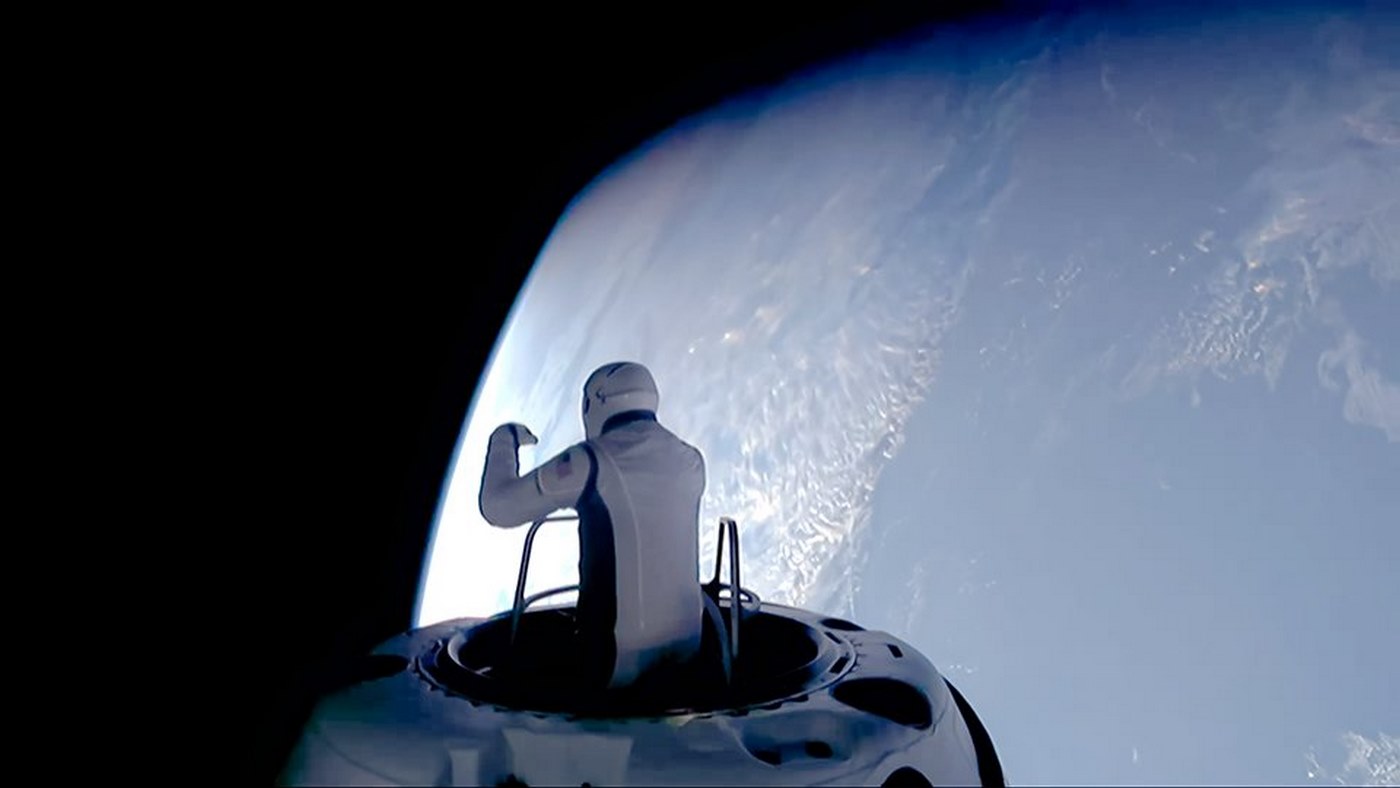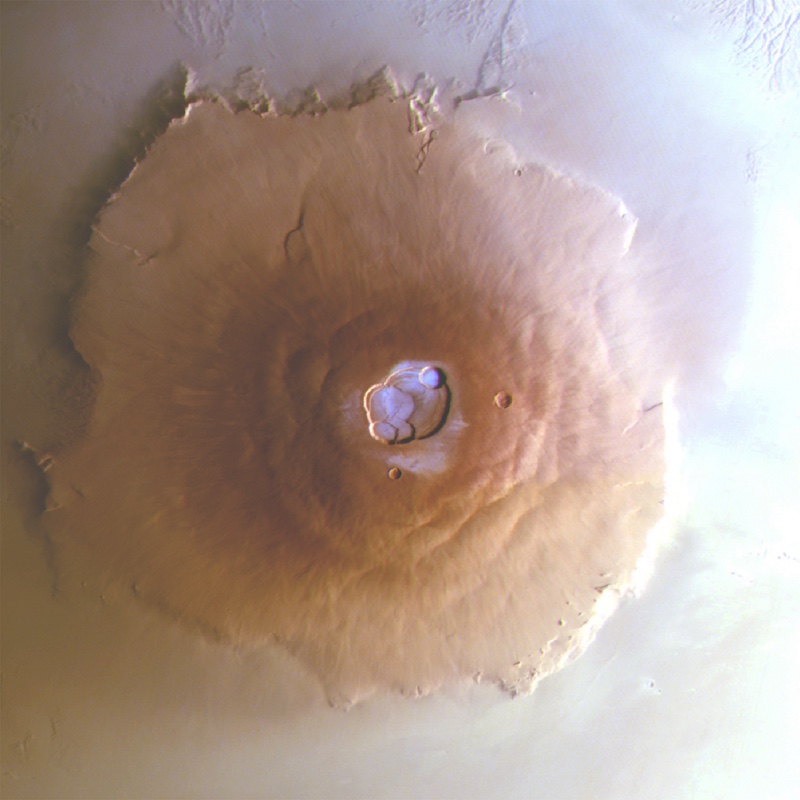PICTURED: A view of the two elements of Gateway – power and propulsion element (PPE) and the habitation and logistics outpost (HALO). Photo credit: NASA Johnson. CC 2.0.
A SpaceX Falcon Heavy rocket will carry the first two of four components of the Lunar Gateway, NASA’s “port of entry” for crewed lunar exploration and expeditions into deep space; eventually to Mars.
Contract in hand, estimated at $331.8 million, Elon Musk’s spacefaring company is scheduled for a May 2024 launch of the Power and Propulsion Element (PPE) and Habitation and Logistics Outpost (HALO) which the agency determined would simply be too costly to launch separately.
Gobs more than other contracts, sending both modules up in sync will require a Falcon Heavy with an extended payload capacity, something SpaceX will likely have to develop and test in the interim.
Six months later than originally anticipated, there is a possibility this May launch date will make the Gateway unavailable to support the Artemis 3 Lunar Lander program, which is looking to fly near the end of 2024.
Combining the modules here on Earth also reduced the need for an in-orbit docking, and by association unnecessary risk.
“That’s both a risk reduction but, more importantly, it’s a huge cost reduction for us,” Doug Loverro, former-NASA associate administrator for human exploration and operations, said in a 2020 presentation. “We’ve saved a lot of money by going ahead and putting those together on a single launch vehicle, as well as knocked down both technical and operational risk for the program”.
PICTURED: An artists rendition of the complete Lunar Gateway with all four modules. Photo credit: NASA Johnson. CC 2.0.
A lunar port of call
Lunar Gateway is a way-station about one-sixth the size of the ISS, and will function as NASA’s equivalent to a Flying J’s on Interstate 66.
The PPE is the engine component. A high-powered, 60-kilowatt solar electric propulsion spacecraft will provide power, high-speed communications, attitude control, and orbital transfer capabilities for the Gateway which will contain docking spaces for visiting aircraft.
In May 2019, NASA selected Maxar Technologies of Westminster, Colorado, to develop, build, and support an in-space demonstration of the element that will last as long as a year.
The HALO module will be the initial crew cabin for astronauts visiting the Gateway. Its primary purpose is to provide basic life support needs for the visiting astronauts after they arrive in the new Orion spacecraft, developed as part of the Artemis Program, and prepare for their trip to the lunar surface.
Designed and built by Northrop Grumman, it will provide command, control, and data handling capabilities, energy storage and power distribution, thermal control, communications and tracking capabilities, as well as environmental control and life support systems to augment the Orion spacecraft and support crew members.
The Canadian Space Agency signed on to support the Artemis and Lunar Gateway Missions by contributing valuable external robotics and their corresponding internal interfaces, including a next-generation robotic arm, known as Canadarm3, which will be able to reach almost every part of the station.
“Gateway will enable a robust, sustainable, and eventually permanent human presence on the lunar surface where we can prove out many of the skills, operations, and technologies that will be key for future human Mars missions,” said Kathy Lueders, NASA’s associate administrator for human exploration and operations.
Continue exploring this topic —At 18,000 Square Feet NASA Approves Solar Cruiser the Largest Solar Sail to Study the Sun
Continue exploring this topic — TransAstra Enters Phase III for Prototyping Revolutionary Asteroid Mining Technologies
